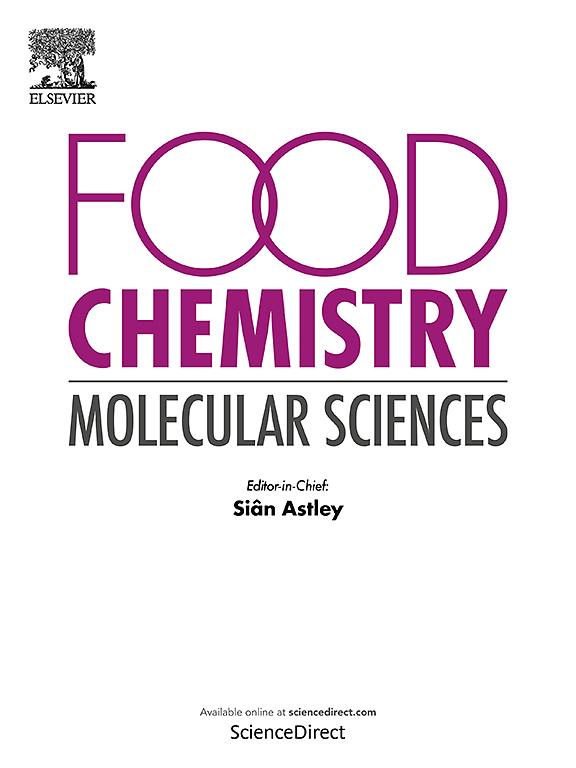Metagenomics-based tracing of genetically modified microorganism contaminations in commercial fermentation products
IF 4.1
Q2 FOOD SCIENCE & TECHNOLOGY
引用次数: 0
Abstract
Genetically modified microorganisms (GMM) are frequently employed for the production of microbial fermentation products such as food enzymes. Although presence of the GMM or its recombinant DNA in the final product is not authorized, contaminations occur frequently. Insight into the contamination source of a GMM is of crucial importance to allow the competent authorities to take appropriate action. The aim of this study was to explore the feasibility of a metagenomic shotgun sequencing approach to investigate microbial contamination in fermentation products, focusing on source tracing of GMM strains using innovative strain deconvolution and phylogenomic approaches. In most cases, analysis of 16 GMM-contaminated food enzyme products supported finding the same GM producer strains in different products, while often multiple GMM contaminations per product were detected. Presence of AMR genes in the samples was strongly associated with GMM contamination, emphasizing the potential public health risk. Additionally, a variety of other microbial contaminations were detected, identifying a group of samples with a conspicuously similar contamination profile, which suggested that these samples originated from the same production facility or batch. Together, these findings highlight the need for guidelines and quality control for traceability of these products to ensure the safety of consumers. This study demonstrates the added value of metagenomics to obtain insight in the microbial contamination profiles, as well as their underlying relationships, in commercial microbial fermentation products. The proposed approach may be applied to other types of microbial fermentation products and/or to other (genetically modified) producer strains.
基于宏基因组学的商业发酵产品中转基因微生物污染的追踪研究。
转基因微生物(GMM)经常用于生产微生物发酵产品,如食品酶。虽然在最终产品中存在GMM或其重组DNA是不允许的,但污染经常发生。深入了解GMM的污染源对于主管当局采取适当行动至关重要。本研究的目的是探索利用宏基因组霰弹枪测序方法研究发酵产物中微生物污染的可行性,重点是利用创新的菌株反褶积和系统基因组方法追踪GMM菌株的来源。在大多数情况下,对16种受转基因污染的食品酶产品的分析支持在不同产品中发现相同的转基因生产菌株,而每种产品往往检测到多个转基因污染。样品中抗菌素耐药性基因的存在与GMM污染密切相关,强调了潜在的公共卫生风险。此外,检测到各种其他微生物污染,鉴定出一组具有明显相似污染特征的样品,这表明这些样品来自同一生产设施或批次。总之,这些发现突出表明,需要制定指导方针和质量控制,以确保这些产品的可追溯性,以确保消费者的安全。这项研究证明了宏基因组学在商业微生物发酵产品中获得微生物污染概况及其潜在关系的附加价值。所提出的方法可应用于其他类型的微生物发酵产物和/或其他(转基因)生产菌株。
本文章由计算机程序翻译,如有差异,请以英文原文为准。
求助全文
约1分钟内获得全文
求助全文
来源期刊

Food Chemistry Molecular Sciences
Agricultural and Biological Sciences-Food Science
CiteScore
6.00
自引率
0.00%
发文量
83
审稿时长
82 days
期刊介绍:
Food Chemistry: Molecular Sciences is one of three companion journals to the highly respected Food Chemistry.
Food Chemistry: Molecular Sciences is an open access journal publishing research advancing the theory and practice of molecular sciences of foods.
The types of articles considered are original research articles, analytical methods, comprehensive reviews and commentaries.
Topics include:
Molecular sciences relating to major and minor components of food (nutrients and bioactives) and their physiological, sensory, flavour, and microbiological aspects; data must be sufficient to demonstrate relevance to foods and as consumed by humans
Changes in molecular composition or structure in foods occurring or induced during growth, distribution and processing (industrial or domestic) or as a result of human metabolism
Quality, safety, authenticity and traceability of foods and packaging materials
Valorisation of food waste arising from processing and exploitation of by-products
Molecular sciences of additives, contaminants including agro-chemicals, together with their metabolism, food fate and benefit: risk to human health
Novel analytical and computational (bioinformatics) methods related to foods as consumed, nutrients and bioactives, sensory, metabolic fate, and origins of foods. Articles must be concerned with new or novel methods or novel uses and must be applied to real-world samples to demonstrate robustness. Those dealing with significant improvements to existing methods or foods and commodities from different regions, and re-use of existing data will be considered, provided authors can establish sufficient originality.
 求助内容:
求助内容: 应助结果提醒方式:
应助结果提醒方式:


